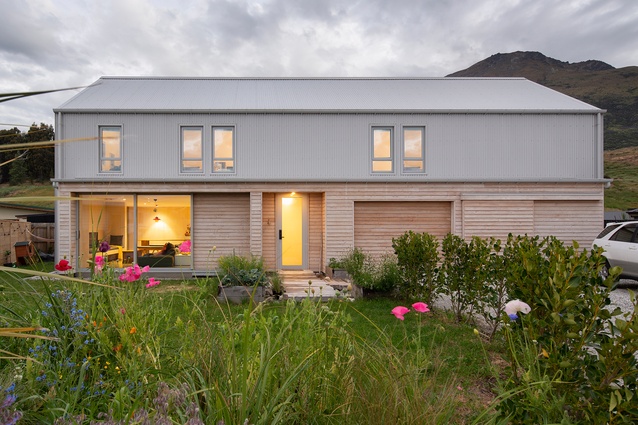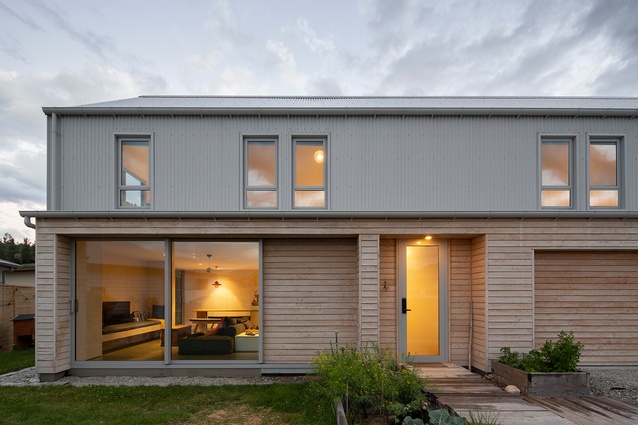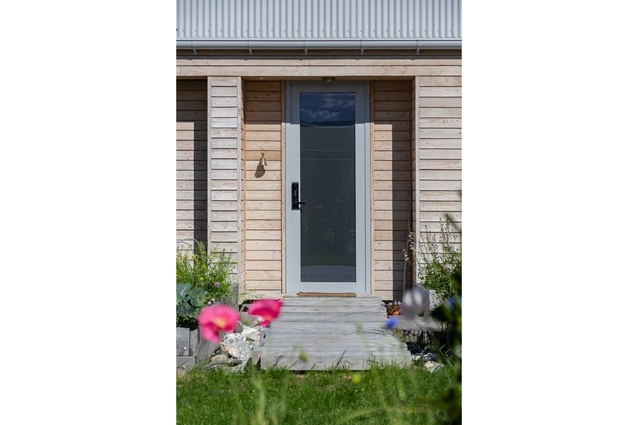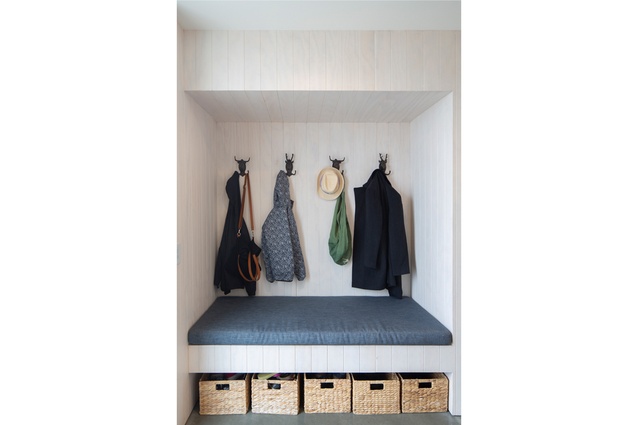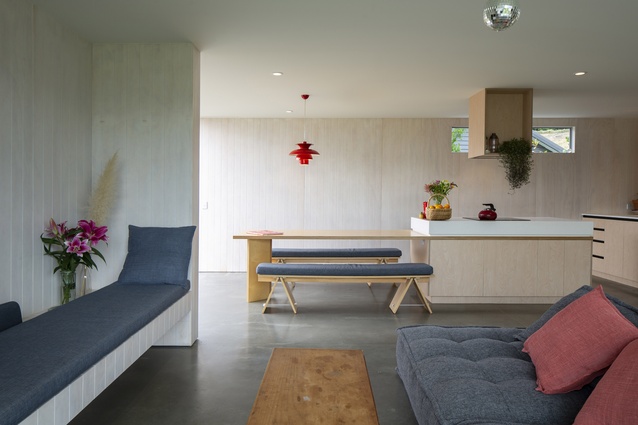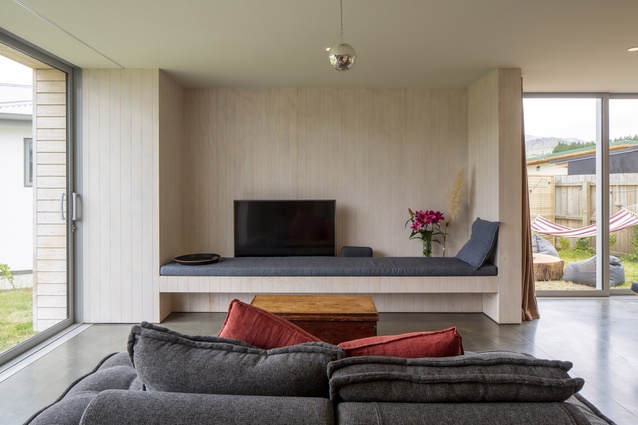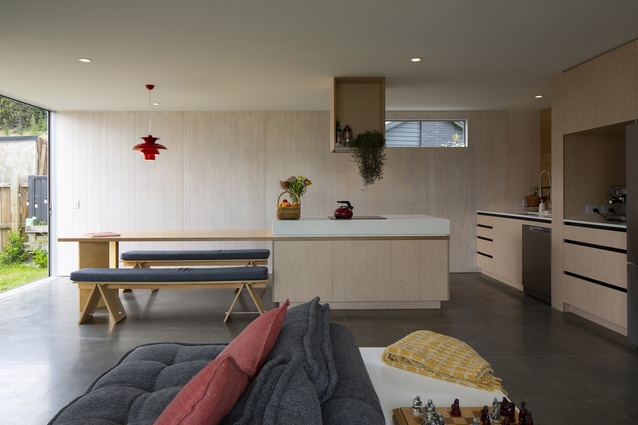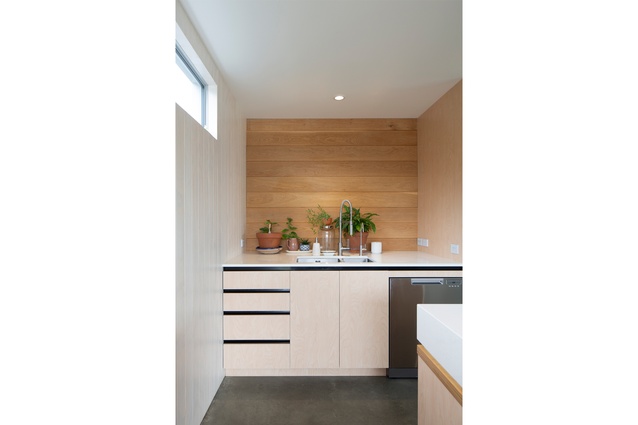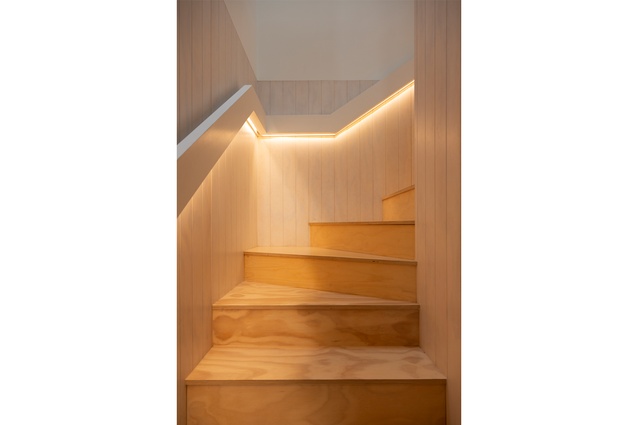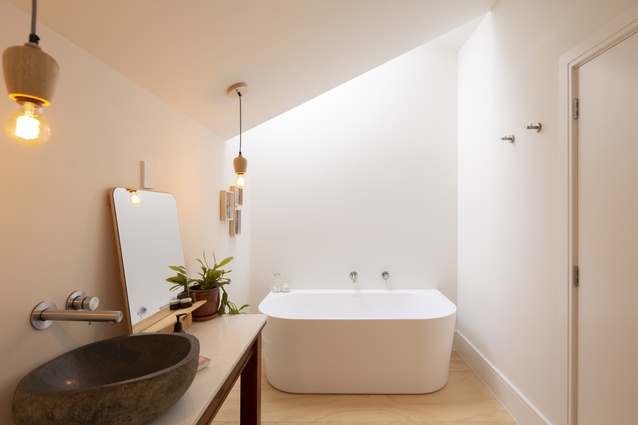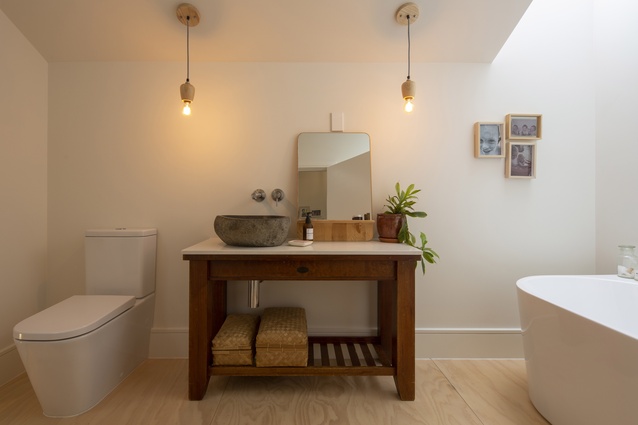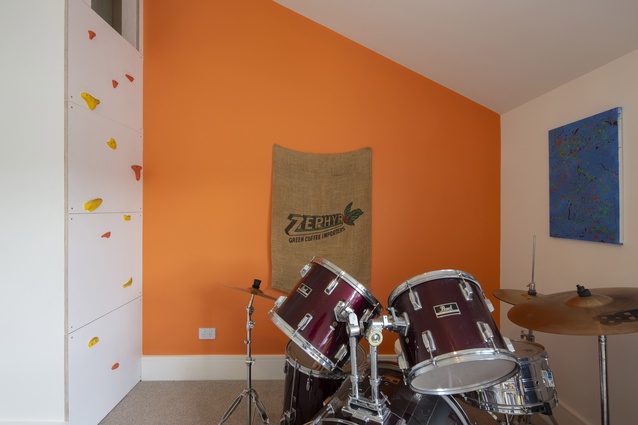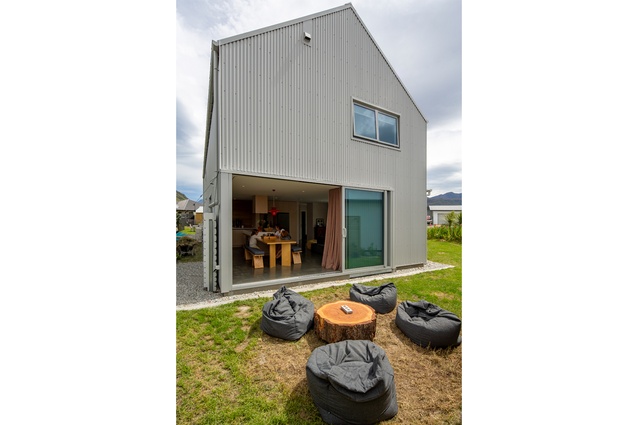Suburban Barn
In part two of this three-part series, Queenstown local Camille Khouri takes a look at some architectural stand-outs in the suburbs, to see what can be done with a relatively low budget and a small site, when homeowners opt to use an architect instead of choosing an off-the-plan design.
Shotover Country’s first release in 2012 provided what many in the area had been looking for: an affordable section in Queenstown. Snapped up by first home buyers and working families, these sections were generally converted into off-the-plan group homes, with a yard for the trampoline and a garage for the lifestyle toys. Over time, sections have become more expensive, driven partly by the zoning of the subdivision, which allows for an attached rental unit on each site. Home and income dreams come true - but the result is car-filled streets and homes that seem to overlap, with sightlines into each other’s gardens and neighbours passing by living room windows.
However, this subdivision is also centrally located to rivers and lakes, beautiful walking and bike trails, the Frankton shopping hub, and has views towards both The Remarkables and Coronet Peak. And along with a modern school parked in its centre, the main drawcard for many is a highly coveted attribute in Queenstown: sunlight. All-day, all year.
These were the major pulls for architect Simon Khouri of Thoughtform Architecture when he built his family home here in 2019. Late to the Shotover party, the site was one of the last available on the subdivision’s upper reaches - and it had been waived by many for a reason: it was an odd, trapezoidal shape with a sewer line boundary running down one side.
“Once all the easements were taken into account, we were left with this funny shaped piece of land,” says Simon. “We knew we would need to maximise the solar gains onto the exposed concrete slab, so we spent a lot of time modelling the neighbouring buildings, creating sun studies and exploring options. The solution was to build a double-storey house at the widest end of the site, creating a long North-facing facade, where it would soak up all that lovely sun.”
To account for the closeness of neighbours, bedrooms are located upstairs with a restrained set of small windows providing views over the rooftops towards Coronet Peak and the surrounding mountain ranges. Downstairs, a clever floor plan allows easy flow around the open-plan living and kitchen space. For maximum living room play area, the table is an extension of the kitchen island and acts as the central hub for the family’s interactions.
External stacking sliding doors open up the living space on two sides, providing a good breeze through in summer. This also allows the sun to passively heat the polished concrete floor, reducing costs in the winter. In the colder months, heating is helped by an underfloor water-to-air heat pump system. This is the only heat source in the house, which remains at a steady, comfortable temperature year-round.
The material palette of the home reflects its barn-like form, with Colorsteel Gull Gray corrugated steel roofing spilling down the walls, contrasted against an Abodo timber-clad lower level on the front facade. These weatherboards are finished in Abodo’s Sioo:x treatment, which is designed to silver off over time, adding to the rural aspect of the design. A sliding barn door accesses a storage nook on the front face, designed for stashing bikes and lawnmowers. The garage door is matched with the Abodo timber to create a cohesive look.
Inside, a modest budget drove some clever solutions, explains Simon. “To keep the cost down we applied a simplistic and minimalist approach to every decision. It all had to be necessary, easy to obtain and easy to build. For example, plasterboard is usually the cheapest option for internal wall linings, but it often takes 3 separate trades to get to the final painted finish. On the ground floor we used v-groove plywood sheets and we set the ceiling height at the length of a full sheet to minimise material wastage.”
This also saves installation time and negates the need for skirting boards, the absence of which gives the downstairs walls an interesting floating look.
The bathroom is another example of a cleverly designed but frugal space. It features tiles recycled from the builder’s previous contract and a Balinese stone basin bought cheap from a local homeware store, set on a second-hand hall stand. Skylights above the bath and shower allow for natural light in the bathroom without the need for windows, which would have overlooked the rear neighbour’s yard. As it is operable, the skylight over the shower also provides natural ventilation, and a view of the night sky can be enjoyed from the bath.
No architect’s home is without its special features. This one is all about the kids, who have climbing walls in both their rooms, which link via a crawl space created in the cavity above the linen closet. A slot view from the crawl space allows them to cheekily shoot Nerf bullets down the stairs at unsuspecting visitors.
A compact, two-bedroom flat is positioned over both storeys on the western end of the building, with a sliding door opening onto a small triangle-shaped lawn. All the openings for the flat are located on this western face, meaning a good degree of privacy between the two residences.
Built on a modest budget, this is a warm, easy-living home that allows for lots of movement and flow for its resident family of four. Designed to be low maintenance, with an aesthetic that harks back to rural Otago barns, it stands out for all the right reasons in this densely populated Queenstown suburb.

